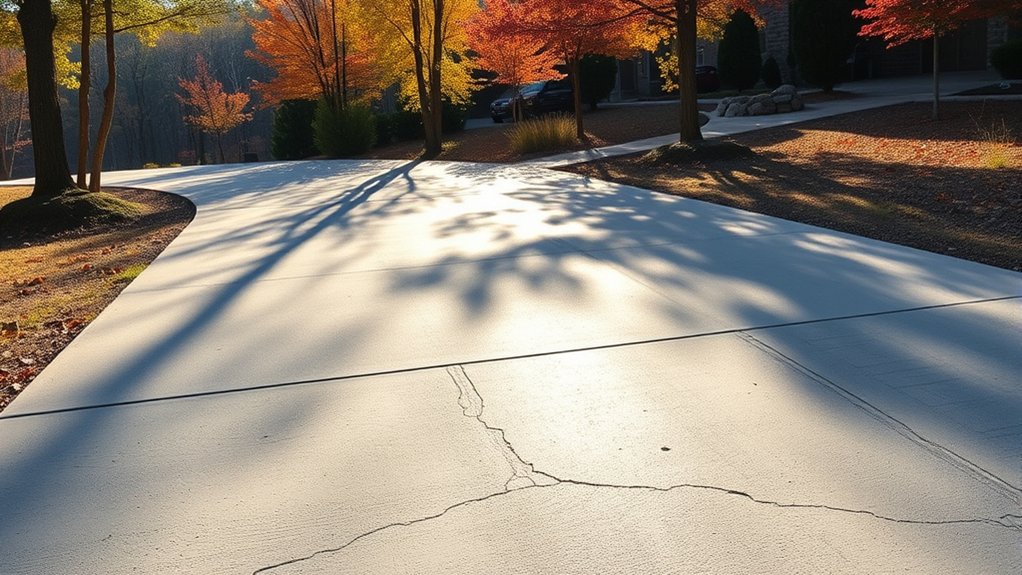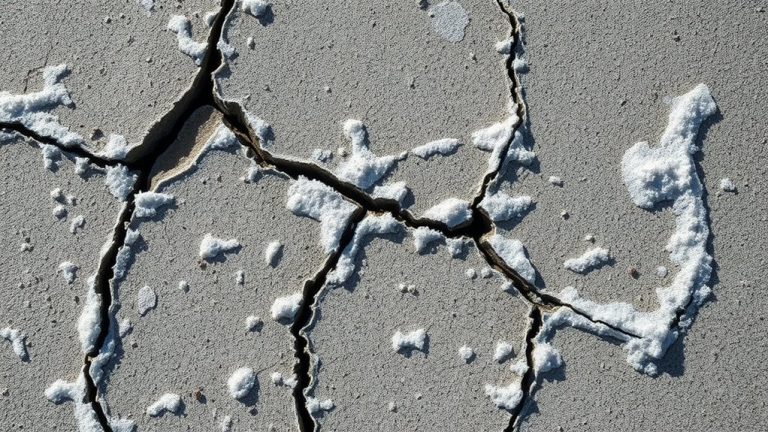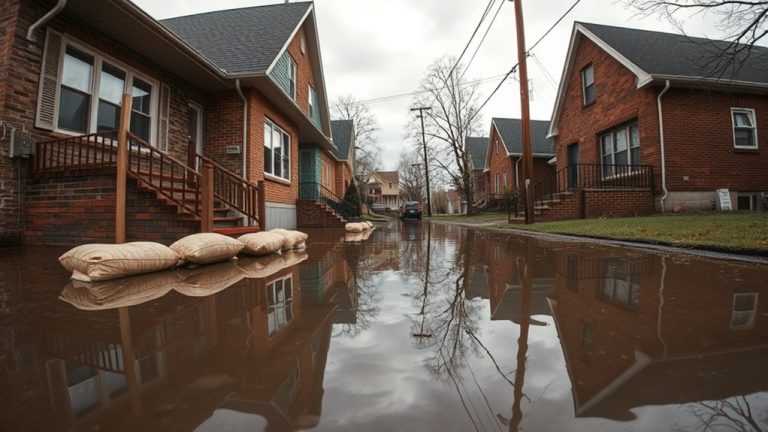If you're combating concrete damage in Upstate New York, timing is everything. Your repair approach can make or break the longevity of your surfaces, especially with the region's harsh freeze-thaw cycles. Late spring and early fall offer the perfect window for concrete repairs, providing moderate temperatures and ideal conditions for restoration. Want to safeguard your investment and guarantee lasting results? Let's investigate the secrets to successful concrete maintenance.
Key Takeaways
- Late spring and early fall provide optimal concrete repair conditions with moderate temperatures between 50-75°F and lower humidity levels.
- Seasonal transitions, particularly from winter to spring, reveal concrete damage, making these periods ideal for comprehensive surface inspections and repairs.
- Concrete repairs require stable environmental conditions that minimize moisture infiltration, temperature fluctuations, and potential curing complications.
- Professional repair services in Central New York recommend scheduling work during moderate temperature windows to ensure proper surface preparation and bonding.
- Long-term maintenance strategies involve timely repairs during favorable seasons to prevent microscopic cracks from expanding and compromising concrete structural integrity.
Understanding Upstate New York's Seasonal Concrete Repair Challenges
Upstate New York experiences four distinct concrete challenges that can wreak havoc on residential and commercial structures. Seasonal freeze thaw cycles dramatically impact concrete durability, causing microscopic cracks and structural weakening with each temperature swing. Regional precipitation patterns compound these issues, introducing moisture that expands and contracts within concrete surfaces. You'll face significant repair needs as winter shifts to spring, when damage becomes most visible. Foundation inspections can help detect early signs of structural damage before these seasonal challenges cause extensive problems. Understanding these environmental stressors helps you proactively plan maintenance, potentially saving thousands in extensive repair costs. Your concrete's longevity depends on recognizing and addressing these seasonal challenges before they escalate into more serious structural problems.
Why Late Spring and Early Fall Are Prime Repair Seasons
With winter's damage now fully exposed and summer's intense heat looming, late spring and early fall arise as the perfect windows for concrete repairs across New York's challenging climate. These seasons offer moderate temperatures and lower humidity, which are ideal for concrete repair scheduling. You'll find the best conditions that allow materials to cure properly without extreme weather interference. Seasonal weather patterns make these periods less disruptive, enabling contractors to complete work efficiently. Your concrete repairs will set quickly, ensuring durability and minimizing potential future damage during these strategic timeframes. Syracuse Foundation Repair offers specialized services across Central New York to address these seasonal concrete and foundation repair needs.
Temperature and Moisture Considerations for Successful Concrete Work
The delicate dance of temperature and moisture can make or break your concrete repair project in New York's unpredictable climate. To guarantee success, consider these critical factors:
- Aim for temperatures between 50-75°F during repair work
- Maintain proper moisture levels for optimal concrete mix design
- Avoid direct sunlight and extreme temperature fluctuations
- Use protective coverings to regulate curing conditions
Successful concrete repairs demand careful planning and precise environmental management. You'll want to monitor weather forecasts, select appropriate materials, and create ideal conditions that support strong, durable repairs. Your attention to detail will determine the longevity of your concrete restoration.
Preparing Your Concrete Surface for Optimal Repair Timing
Before diving into concrete repairs, you'll want to thoroughly assess and prepare your surface to confirm a successful restoration. Concrete surface evaluation is critical, so start by closely inspecting your damaged area for cracks, spalling, or uneven sections.
You'll need to clean the surface completely, removing dirt, debris, and loose materials that could jeopardize your repair work. Ideal preparation methods involve using wire brushes, pressure washing, or grinding to create a clean, rough surface that'll help new repair materials bond effectively. Your meticulous preparation verifies lasting results.
Long-Term Maintenance Strategies for Durable Concrete Surfaces
Maintaining your concrete surfaces can quickly become a proactive shield against costly future repairs. By understanding concrete durability factors and preservation techniques, you'll protect your investment and extend surface longevity.
Consider these strategic maintenance approaches:
- Regular visual inspections for cracks and wear
- Seasonal sealing to prevent moisture penetration
- Prompt repair of minor damage before escalation
- Professional annual assessment of surface conditions
Your commitment to consistent care prevents extensive deterioration, saving you significant time and money. Implementing these strategies guarantees your concrete remains strong, resilient, and aesthetically pleasing throughout Upstate New York's challenging climate conditions.
Frequently Asked Questions
How Much Do Typical Concrete Repairs Cost in Upstate New York?
You'll find concrete repair costs in Upstate New York range from $300 to $3,000, depending on damage extent. Seasonal variations and regional labor rates profoundly impact your total cost estimates.
Can I Do Concrete Repairs Myself or Should I Hire Professionals?
You can DIY concrete repairs, but weigh expert consultation benefits against do-it-yourself considerations. Complex repairs require professional skills, while simple fixes might save you money and offer a sense of accomplishment.
What Happens if Concrete Repairs Are Delayed During Winter Months?
If you delay concrete repairs during winter, you'll face freeze-thaw damage and costly construction delays. Your structure's integrity weakens as moisture expands and contracts, potentially causing extensive, expensive future repairs.
How Long Do Concrete Repairs Typically Last in This Climate?
With proper techniques, you'll see concrete repairs lasting 10-15 years, despite seasonal variations and freeze-thaw cycles that challenge your infrastructure's durability in demanding Upstate New York environments.
Are Concrete Repair Costs Covered by Homeowners Insurance?
You'll need to check your insurance policy coverage, as most concrete repairs fall under homeowner responsibility. Typically, damage from sudden events might be covered, but gradual wear rarely qualifies for reimbursement.



